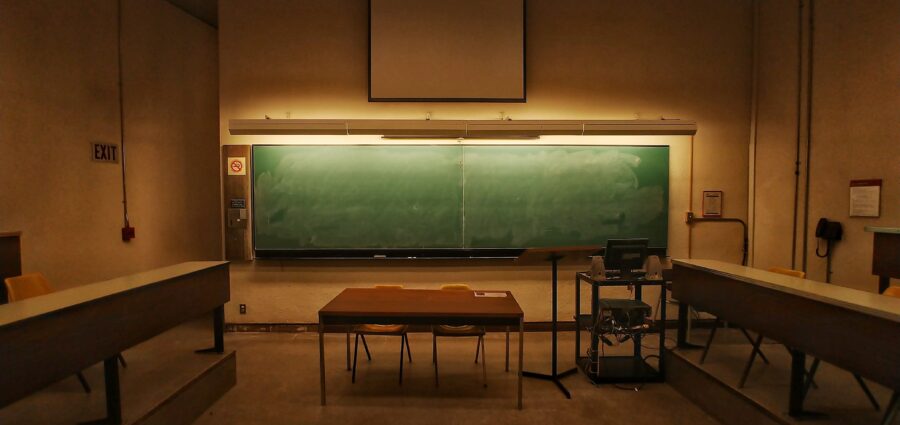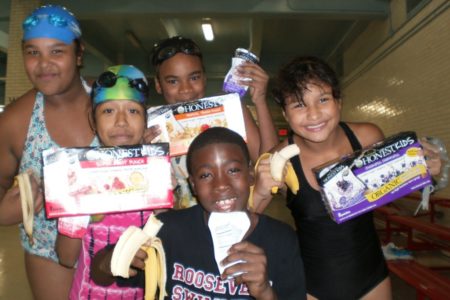Student leaders representing 40,601 NYC public high schoolers spearhead effort to supersede Mayor de Blasio’s dangerous proposal for blended learning in high schools.
The letter, signed by students, parents, teachers, and alumni, highlights the widespread opposition among New Yorkers for the proposed model and details why the unique circumstances faced by New York City high schools make reopening them especially likely to kickstart a second wave of the coronavirus. These circumstances include the massive size of these schools, the number of commuting students, and the relative ease with which high schoolers can transmit CoViD-19.
The letter also explains how the allocation of resources under a mixed-learning proposal would drastically increase inequality within our schooling system, both based on access to resources and disability.
While restarting the in-person education of younger students is crucial for their cognitive development and for enabling their parents to work, such concerns are not applicable to the reopening of high schools.
The letter follows.
Dear Governor Cuomo,
Over the past few weeks, Mayor de Blasio, Chancellor Carranza, and the NYC Department of Education have created a blended learning model, under which at least 33% of students are expected to attend each day and no school is permitted to conduct fully remote learning. However, this “one size fits all” model is not suitable for NYC high schools specifically. We believe that each NYC high school should be fully remote during this fall, especially schools with over 2,000 students, regardless of how other schools operate.
First, New York City high school students have longer and riskier school commutes. While most elementary and middle school students in NYC attend schools within their own districts, high school students apply to and end up in schools all over the city. As a result, over 300,000 high school students consistently commute on crowded buses and trains, thus increasing chances of contracting and transmitting the virus to their families, schools, and communities. This is especially dangerous because students between ages 10 and 19 contract and transmit the virus as well as adults do.
Second, blended learning intensifies the inequity in our education system. In this model, schools will be required to spend valuable resources on actions such as power washing and PPE replenishment, instead of ensuring that every student has access to a laptop and the internet— a necessity for students in any scenario. Seeing as current DOE guidelines call for a school to close if it reports just two positive cases, there is no feasible way for NYC’s largest high schools to go even a few weeks without reverting back to a fully remote model with no time to prepare. This will force schools to repeat the problem-ridden asynchronous remote learning experience that occurred in the spring, preventing low-income students from gaining access to whatever online learning experience is rolled out. If schools inevitably close down, we must prioritize a remote learning model from the beginning to give teachers and schools the most amount of time possible to prepare.
Even if schools manage to stay open, having both remote and in-person classes creates a two-tiered system of education. By not prioritizing funding and resources for online learning, the DOE is preventing students who attend school remotely from accessing the same quality of education or even the same teachers as their peers. In their own plan, there is not even a mention of how remote learning will work for these students. This especially impacts immunocompromised and other medically-vulnerable students, who will be forced into this inferior second tier. As a result, the DOE’s proposed model runs afoul of Title II of the ADA. A fully remote model ensures equal education for not only these students, but also District 75 students, IEP students, and students with other learning disabilities, for whom in-person learning is a necessity. The empty high school buildings in a remote model can be used to teach these students, ensuring that they can practice safe social distancing measures while not sacrificing any of their critical in-person instruction, as they would have to do in a blended model.
As you and your Administration are well aware, the CoViD-19 crisis is far from over. With the threat of a second wave looming and a vaccine unlikely by the end of 2020, every policy action can determine whether New York continues on a positive trajectory, or we re-experience the horrors of April and May. If we proceed with the blended learning model, we make a massive second wave more likely. If that happens, schools across the state will be forced to quickly put together a remote learning model that lowers the quality of education and wastes the numerous resources already utilized. The virus will spread throughout the city, with us high schoolers as the carriers, and more students, teachers, and parents could suffer and die. Fortunately, over the next month, there is ample time to put together a coherent, cohesive, and comprehensive remote learning model for schools, improving upon the model used in the spring and avoiding the negative consequences of a hasty reopening. The health and educational harms of a second wave far outweigh any of the short-term learning losses that may accompany another few months of remote high school learning. As your constituents and soon-to-be voters, we urge you to supersede the dangerous order put in place by Mayor de Blasio. By doing so, you have the ability to prevent NYC from becoming what would be the definitive epicenter of any second wave in New York State.
Sincerely,
The Students of New York City’s Public High Schools
Co-Signatories Representing 40,601 NYC Public High School Students:
- Clyde Dwyer, Student Government Representative, Bard High School Early College Manhattan, Manhattan;
- Edona Cosovic, Student Government Representative, Bard High School Early College Manhattan, Manhattan;
- Eleanor Baron, Co-President, Bard High School Early College Queens, Queens;
- Tahsin Uddin, Co-President, Bard High School Early College Queens, Queens;
- Tehreem Saleem, Co-President, Baruch College Campus High School, Manhattan;
- Tanya Ansari, Student Organization President, Bayside High School, Queens;
- Doan Huynh, Student Organization Vice President, Bayside High School, Queens;
- Sophie Poritzky, Student Organization President, Bronx High School of Science, Bronx;
- Timothy Brett, Senior Student Leadership Representative to the DOE, Bronx High School of Science, Bronx;
- Umutcan Vargelci, Senior Class President, Brooklyn Technical High School, Brooklyn;
- Phillip Schacht, Student Body President, Forest Hills High School, Queens;
- Abigail Katzap, Senior Class President, Francis Lewis High School, Queens;
- John Douveas, Student Organization President, Francis Lewis High School, Queens;
- Roni Mikhaylov, Student Body President, Frank Sinatra High School, Queens;
- McKenzie Samuels, Student Body President, Harry S. Truman High School, Bronx;
- Daniel Giraldo, Student Body President, High School of American Studies, Bronx;
- Clay Seliga, Student Leadership Representative to the DOE, High School of Math, Science, and Engineering,
Manhattan; - Durga Sreenivasan, Student Body President, Hunter College High School;
- Khadija Rashid, President of Student Government, James Madison High School, Queens;
- Olsmaël Merisier, Mayor, Midwood High School, Brooklyn;
- Fallon Utley, Student Government President, NYC Lab School for Collaborative Studies;
- Anna Son, Executive Student Government Organisation President, Queens High School For The Sciences At York College, Queens;
- Vincent Lepani, Class President, Susan E Wagner High School, Staten Island;
- Sharon Li, Student Union President, Townsend Harris High School, Queens.








